The Wahoo Trackr Radar is the latest entry to the rear radar category. Like other options, it’s a rear light that flashes with various intensities depending on user choice but also based on car detection. Of course, that last bit is the real story of what a a bike radar does.
Rear radar is a category that Garmin invented back in 2015. Or you could say it’s a category that a small company called iKubu invented in 2014, but that’s a matter of perspective. Garmin bought iKubu before anything came to market and the first Garmin Varia radar launched in 2015 as a way to get alerts about cars behind you.
In Velo‘s cycling accessory reviews we have also tested the Trek Carback and I’ve also tested options from Magene. What they all do is show up on your bike computer and tell you that there’s a car coming plus an idea of how fast. You can choose audio or only visual alerts and, when it’s done well, it will be as good as a mirror except more attention grabbing. The Wahoo Trackr radar is the latest in the category and the unique selling proposition is supposed to be that it’s always connected to either the Wahoo app or a bike computer, plus it has a better mount and sensor to catch driver attention. Unfortunately, the execution isn’t perfect in my testing.
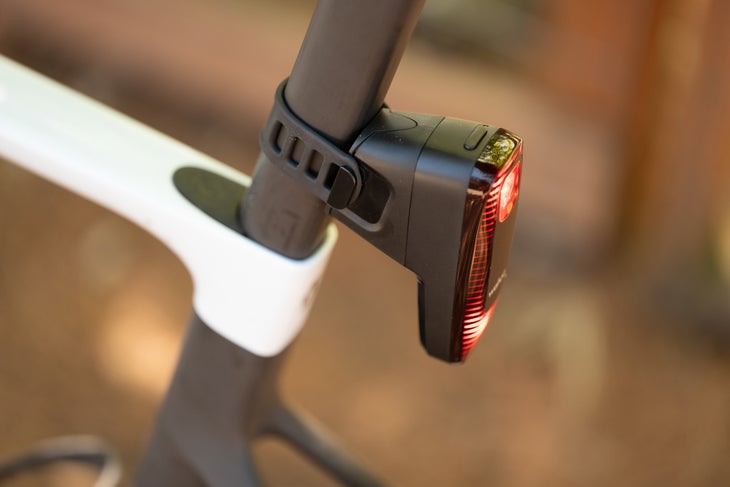
Specs
| Weight | 3.5oz (99g) |
| Battery | Rechargeable Lithium Ion |
| Battery Life | High steady – 21 lumens/10hrs; low steady – 10 lumens/15hrs; high flash – 53 lumens/15hrs; low flash – 18 lumens/20hrs; Light off – 55hrs; Battery saver 18 lumens brightening to 53 on detection/17hrs. |
| Water Rating | IPX7 (up to 1 meter for 30 minutes) |
| Connectivity | ANT+ and up to three simultaneous Bluetooth connections |
| Supported Devices | ANT+ Radar compatible cycling computers and fitness watches for use, Wahoo app for iOS and Android (The Wahoo app is used only for updating firmware and controlling light modes. For normal use, an ANT+ Radar compatible cycling computer is required). |
| Radar sensitivity range | 150m (492 ft) |
| Radar beam width | 35 degrees |
| For more: | Wahoo website |
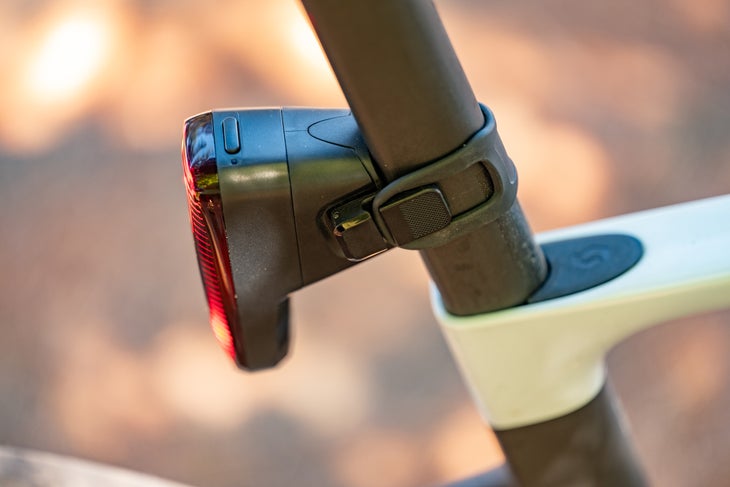
What’s good about the Wahoo Trackr radar
Although there are a variety of radars that have hit the market over the years, only the Trek and Garmin have so far been worth considering. The reason for that is simply that it’s imperative a radar work as it is supposed to. This is a safety device and having phantom positives (detects a car but it’s not there) or, more concerning, phantom negatives (misses a car that is there) can’t happen. The Wahoo Trackr joins them, passing this test with flying colors.
If there’s a car behind you, it will show up on your bike computer. If your bike computer shows a car, it’s there. Obviously this should be a given, but Magene radar units have consistently failed at this critical step.
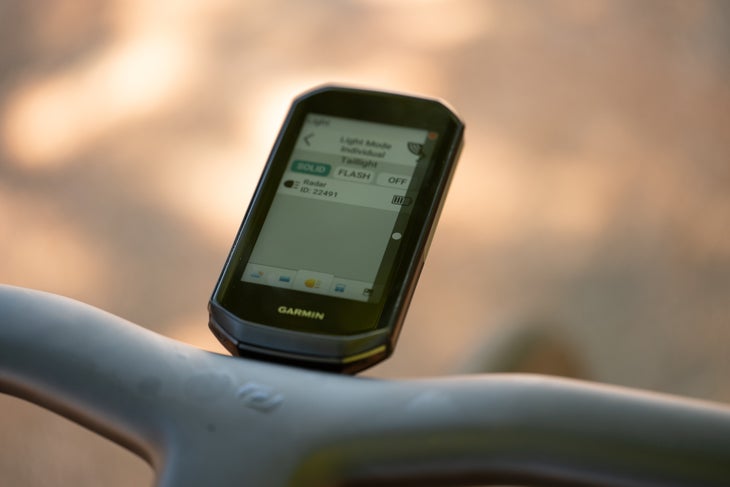
From there you start to get into the things that are nice to have secondarily. On that front, the headline features for most people are the safety features. That includes things like a brake light that uses acceleration to brighten the light as you brake and the Quick Alert that changes the flash pattern when there’s a car detected. You can also include the bright side lighting in that category as well. These all work well from a conceptual point of view.
The mount is also a positive. Apples to apples the rubber mount that Wahoo includes is better than that of Garmin and the innovation is simple. Instead of having to pull the rubber and hook it there’s a big plastic pull-tab to help stretch the rubber strap. Simple but effective.
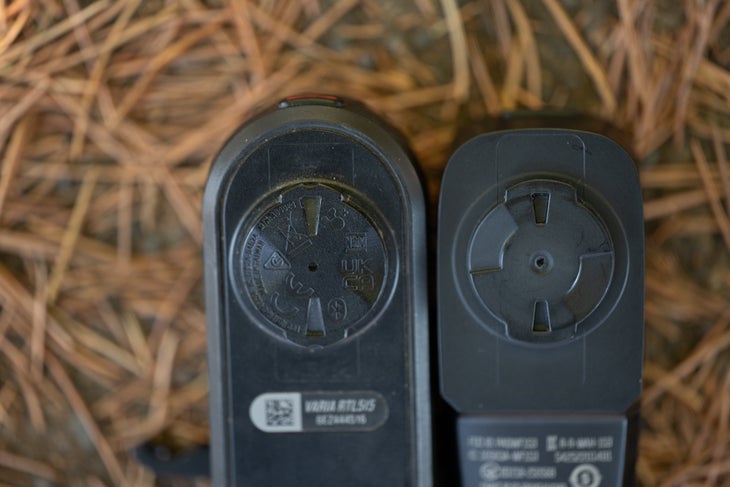
In terms of interface, Wahoo uses the same quarter-turn mount as its computers. Interestingly, that also has a benefit for the Wahoo Trackr radar mounting compatibility. What’s happening is that while Wahoo leaves the mount the exact same as Garmin, the Garmin mount changes orientation from computer to radar. You could always mount a Wahoo computer sideways in a Garmin outfront mount but for radar mounting the two are the same and lots of random third-party radar mounts work for both. The only difference is that the Wahoo uses slightly wider tabs so not every mount works for both. That said, you could probably modify one that didn’t.
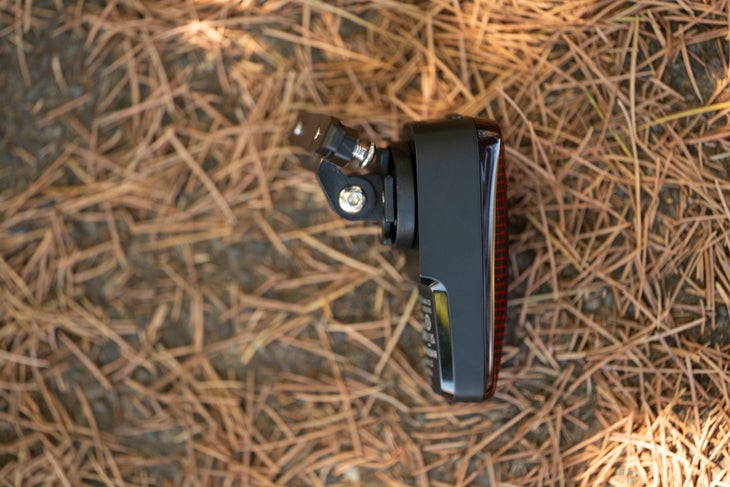
Then there’s USB-C charging. The Garmin Varia still rocks the old USB interface in 2025, so consider this your release from that outdated standard.
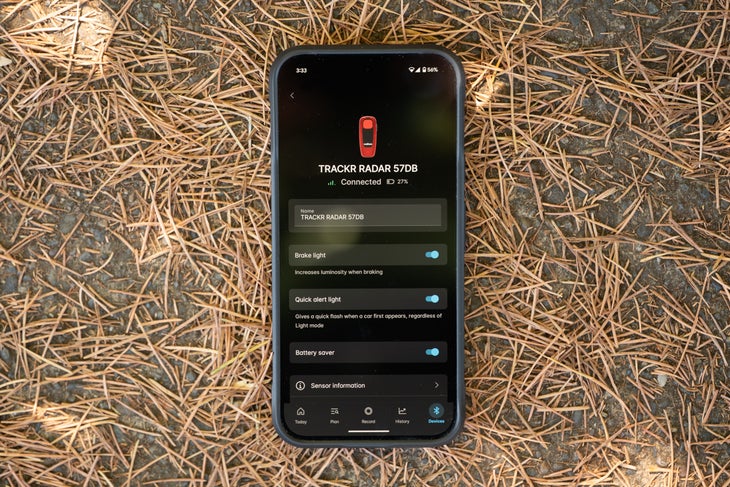
What the Wahoo Trackr radar misses
The Wahoo Trackr radar basically answers all the requests of an updated rear radar in 2025. The brake light is a new feature compared to the Garmin Varia and while the Varia has similar functionality to Quick Alert, it’s here too. The big one is that it has USB-C charging and mostly, though not 100%, matches the mounting of Garmin Varia radars meaning you can use the many mounts available in the aftermarket. It even has better battery life… except it doesn’t.
The mode you are likely to actually use is high flash. It’s bright and attention grabbing plus 15 hours is plenty of time, why not use it? Unfortunately it does not last for 15 hours. In my experience I was able to get roughly 7.5 hours of battery life in this mode. Wahoo claims that the brake light and Quick Alert modes have no impact on battery life so this isn’t a case of more cars or less.
I also tried turning on battery saver mode as I see no reason not to have the light lower when there’s no car around anyway. Doing this did jump my burn time quite a bit and I managed 10 hours of light on time with 8.5 hours of moving time. Good but still 5 hours short of the quoted spec and that’s at 53 lumens. In comparison, a Garmin Varia RTL515 quotes 16 hours and it’s a number you can expect to hit in normal use at a slightly higher 65 lumens.
As a slight aside to this, it’s possible I am missing something in my testing. I keep thinking that must be the case even as I write this but I’ve spent months testing it in different ways. I worked with Wahoo, had my original unit replaced (which did seem to help), and after all that I connected the Wahoo Trackr Radar to a Garmin 1050 and went out for a 150-mile ride. It wasn’t even close to the spec.

Should you buy the Wahoo Trackr radar?
When I reviewed the Trek CarBack radar I got a call with a simple question: is battery life the only thing that matters in a radar unit? The answer is no, but there has to be something else offered.
Trek, and now Wahoo, are offering rear radar units that do the same job as a Garmin Varia. In my testing all three of these units detect cars at virtually the same time. They don’t miss cars and they don’t report cars that aren’t there. They both also offer USB-C charging which is something the Garmin Varia RTL515 desperately needs in 2025. However, the other features that are supposed to set them apart either don’t in practice, or don’t perform as advertised.
The Wahoo Trackr radar is supposed to offer always-on and easy connection to a bike computer. In reality it’s the same as a Garmin. It mostly works but it’s easy to confuse the device and then it doesn’t work. Leave the Wahoo at home for a ride and it gets confused and you have to turn it on and off with the button for the next ride. Then it’s fixed and it works. Garmin behaves exactly the same. That’s not a differentiating point for Wahoo.
Then there’s the brake light and Quick Alert — but are those a selling point? Garmin has an equivalent to the Quick Alert, but no brake light function. I struggle to see the brake light alone as a reason to buy the unit even if it is a nice added feature.
That leaves the battery life. You likely don’t need 16 hours of burn time, but extra burn time also means less charging between rides. You might appreciate that but either way when you look at the features of the Wahoo Trackr radar and the Garmin Varia RTL515 you’d want the Wahoo to either come ahead or cost less. Instead the Wahoo Trackr radar runs an extra $50 premium compared to the Garmin option and falls behind on real-world battery life.
The relative ease of reusing mounts, USB-C charging, and a slightly nicer included mount are pros for Wahoo. But is that enough? Are you going to pay a premium for it while getting less battery life? I find that a hard recommendation to make. I’ve continued to work with Wahoo to figure out what’s happening with the battery life and so far, nothing has changed. That said, the unit is overall a reasonable upgrade compared to the competition. If the battery life hit the quoted spec, it would be an easy recommendation for me to make. To decide, you’ll have to weigh what features — namely brake light, saving money, and battery life — are most important to you.
